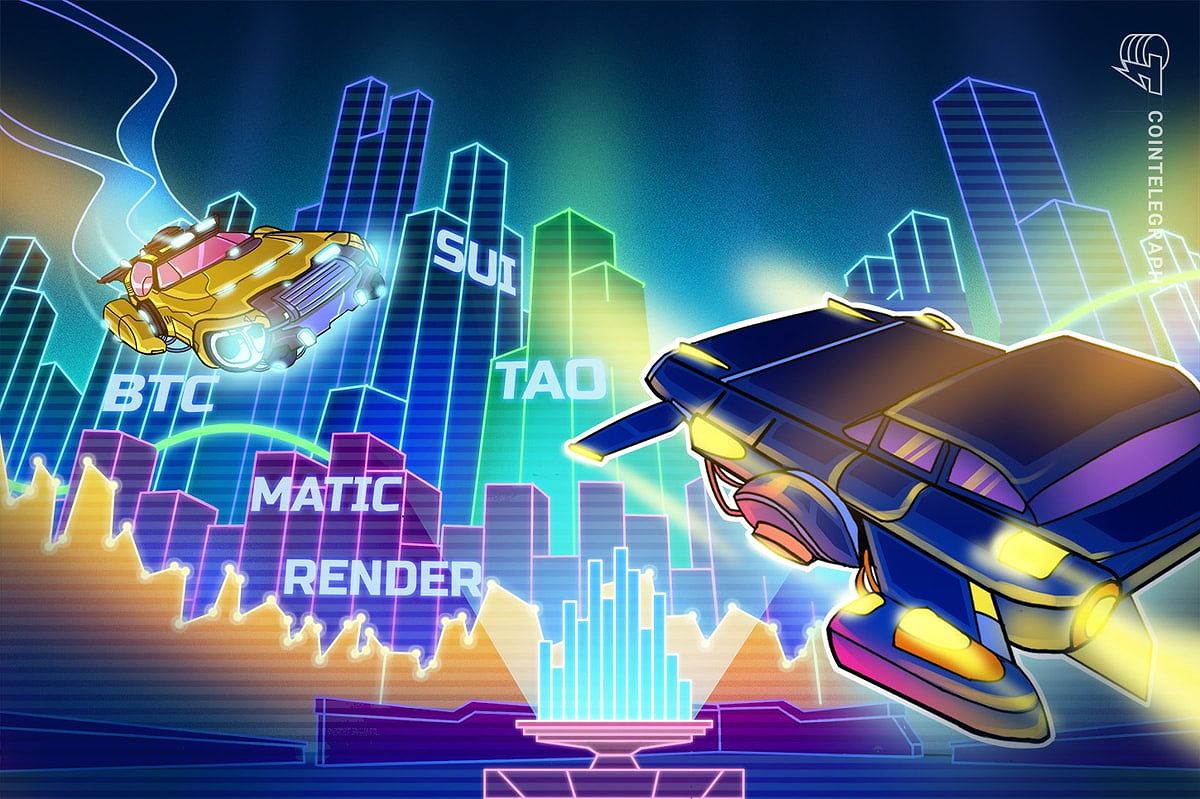The cryptocurrency landscape is often portrayed as a binary choice: Bitcoin or nothing. Yet, a deeper investigation reveals a rich tapestry of altcoins—alternative cryptocurrencies that collectively account for a staggering 90% of the market’s value. As Bitcoin continues to dominate headlines, a growing faction of investors is beginning to question the wisdom of placing all their bets on a single asset. This article navigates the complexities of altcoin investment, advocating for a diversified approach while spotlighting five intriguing contenders that could disrupt the status quo in 2024.
Why Challenge the Bitcoin Paradigm?
Bitcoin, the pioneer of cryptocurrencies, has undeniably set the stage for a financial revolution. However, tethering your entire investment strategy to a single entity invites substantial risk. The volatility inherent in Bitcoin is not merely a market characteristic; it is a potential pitfall that could devastate portfolios reliant on its whims. By diversifying into altcoins, investors can not only cushion against Bitcoin’s unpredictable swings but also tap into innovative projects that may outshine Bitcoin’s performance over time. Altcoins often embody groundbreaking technology and novel applications, offering a glimpse into the future of decentralized finance and digital interactions.
Factors to Consider When Evaluating Altcoins

Embarking on the journey of altcoin investment requires a discerning mindset. Here are critical elements to scrutinize before diving into the altcoin arena:
-
Project Fundamentals: A project’s success hinges on its foundation. Analyzing the team behind it, the technology employed, the roadmap laid out, and the practical applications of the token is imperative. A capable team with a history of achievement, a technology that addresses real-world issues, and a clear vision for future growth are essential markers of a project’s potential.
-
Market Capitalization and Trading Volume: These metrics serve as barometers for a cryptocurrency’s health. Market capitalization provides insight into the asset’s overall value, while trading volume reflects market engagement. Generally, a higher market cap coupled with robust trading volume suggests greater liquidity and a more favorable environment for growth.
-
Tokenomics: Understanding the economic principles governing a token is crucial. A well-structured tokenomics model—characterized by limited supply, equitable distribution, and clear utility—can significantly enhance a token’s long-term viability and attractiveness.
-
Technical Analysis: While it may seem esoteric, delving into price charts, support and resistance levels, and market trends can yield valuable insights. Technical analysis is not just about numbers; it’s about reading the market’s sentiment and predicting future movements.
With a solid grasp of the investment landscape, let’s turn our attention to five altcoins that stand out as challengers worth your consideration in 2024.
Polygon (MATIC)
Polygon is not merely a layer-2 scaling solution for Ethereum; it is a revolutionary approach to solving Ethereum’s notorious scalability issues. By facilitating faster transaction speeds and reducing fees, Polygon democratizes access to Ethereum, making it a linchpin in the decentralized finance (DeFi) and Web3 ecosystems. Its seamless integration with Ethereum positions it as a formidable player in the blockchain landscape.
Sui (SUI)
Sui represents a new frontier in blockchain technology, offering speed and scalability that could redefine user experiences. With its innovative transaction processing methods, Sui aims to deliver near-instantaneous transactions, making it an attractive option for developers of high-performance applications and decentralized gaming platforms. Its potential to challenge established norms is worth keeping an eye on.
Render (RENDER)
In a world increasingly reliant on visual content, Render is carving out a niche as a decentralized rendering network. By harnessing the computational power of individual users, Render provides a scalable and cost-effective solution for generating high-quality graphics. This democratization of rendering technology could disrupt traditional industries reliant on expensive rendering farms, making it a project to watch closely.
Bittensor (TAO)
Bittensor is at the intersection of artificial intelligence and decentralized networks, aiming to democratize access to AI technologies. By enabling users to develop and deploy AI models on a distributed network, Bittensor fosters collaboration and innovation in the AI landscape. Its potential to reshape how we think about AI accessibility makes it a compelling contender in the altcoin space.
Near (NEAR)
Near is more than just a blockchain platform; it is a user-centric ecosystem designed to simplify the development of decentralized applications. Its emphasis on user experience and accessibility positions it as a key player in the evolving Web3 space. Near’s robust infrastructure and commitment to ease of use could make it a go-to platform for developers looking to innovate without the steep learning curve typically associated with blockchain technology.
Navigating Risks with Due Diligence
While the allure of altcoins is undeniable, it is crucial to approach this investment arena with caution. The cryptocurrency market is notorious for its volatility, and altcoins are no exception. To navigate these turbulent waters, here are essential risk management strategies:
- Invest within your means. Always adhere to the principle of only investing what you can afford to lose.
- Conduct thorough research. Investigate each project meticulously, examining its team, technology, roadmap, and community engagement.
- Understand the risks. Recognize the inherent risks associated with each altcoin, including market fluctuations, regulatory challenges, and technological vulnerabilities.
- Diversify wisely. Spread your investments across various altcoins to mitigate concentration risk and enhance your portfolio’s resilience.
Conclusion
The altcoin market is a treasure trove of opportunities for those willing to look beyond Bitcoin’s prominent shadow. By rigorously evaluating project fundamentals, market indicators, tokenomics, and technical trends, investors can uncover altcoins that align with their financial aspirations and risk appetites. However, the importance of sound risk management and due diligence cannot be overstated. As the altcoin landscape continues to evolve, staying informed and adaptable will be key to navigating this dynamic and potentially rewarding market.

